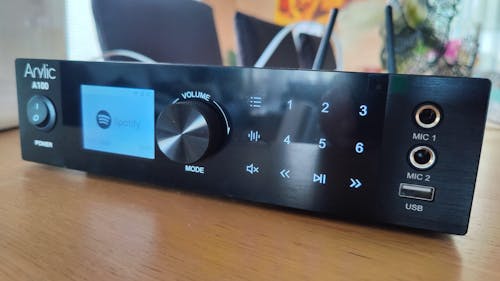It is crucial to put your subwoofer placement in the correct position in your home, and it will impact your home audio setup sound quality a lot. However, most of us leave the subwoofer placement at a practical and pleasing location, but we ignored whether we make good use of the subwoofer or not.
The subwoofer is too large and it must be installed on the floor, they can cause quite a commotion with your family or flatmates if your home theater or audio system is in the living room. Many of us have no idea about the subwoofer placement so we will put it randomly or just put it beside other speakers.
Fortunately, It delivers decent audio quality regardless of where you the subwoofer placement is, but if you want to attain ideal sound, check out this tutorial on how and where to place your subwoofer in your space to produce an immersive, explosive bass sound.
subwoofer placement : what is a subwoofer
The subwoofer placement is critical for ensuring the best audio performance and producing a rich, immersive listening experience.
A subwoofer is a type of speaker that is designed to reproduce low-frequency sounds, notably deep bass tones. Subwoofer placement refers to the strategic placement of the subwoofer within a room or audio arrangement. Choosing the best subwoofer placement necessitates taking into account aspects such as room dimensions, furniture arrangement, and acoustic qualities.
The idea is to have an even and balanced dispersion of bass throughout the listening area. Because the surfaces act as natural amplifiers, placing the subwoofer in a corner or against a wall helps improve bass response.
However, avoid placing it too close to the room's limits, since this can result in boomy or overbearing bass. Experimenting with multiple placements, utilizing tools such as subwoofer crawl or sound testing applications, can assist in determining the best placement for your individual room.
You can unlock the full power of your subwoofer and enjoy a more immersive audio experience by choosing the correct position.
subwoofer placement : how does a subwoofer work
Standard speakers, due to their structure, cannot reproduce lower frequencies as precisely as higher frequencies, which is why we want a loudspeaker specifically created for bass sounds.
A subwoofer's bigger woofer, which can range in size from 8 to 21 inches, guarantees that the lower frequency spectrum is reproduced with accuracy and depth.
Subwoofers, like normal speakers, can be active or passive. Active subwoofers require a power supply and their own built-in amplifier, whereas passive subwoofers must be connected to a power source (a receiver or an amplifier).
subwoofer placement : A few descriptions of low frequencies
Low frequencies are distinguished by their deep, rumbling tones, which enhance the impact and depth of audio. Subwoofers are intended primarily to handle low-frequency sounds, delivering powerful bass that may be felt as well as heard.
Finding the proper subwoofer placement is critical for delivering an accurate and balanced bass response. Placing the subwoofer placement strategically within a room allows it to interact with the acoustics of the room and accentuate the low frequencies in a desirable way.
Experimenting with different settings, such as corner subwoofer placement or along a wall, can help to maximize bass performance by utilizing the room's inherent resonance. However, it is critical to avoid overpowering the space with bass by positioning the subwoofer too close to the walls.
The key to successful subwoofer placement and, ultimately, a more immersive audio experience is striking a balance between room interaction and regulated bass reproduction.
subwoofer placement : 5 options to consider
- Corner Positioning: Positioning the subwoofer in a corner of the room can improve bass response. Corner positioning makes use of the room's limits, which operate as natural amplifiers for low frequencies. However, avoid subwoofer placement too close to a corner, since this can result in excessive booming bass.
- Front Positioning: Placing the subwoofer in the front of the room, near the primary speakers, helps provide a more coherent soundstage. This subwoofer placement ensures that the bass blends smoothly with the rest of the music, resulting in a well-balanced listening experience.
- Side Positioning: Placing the subwoofer along the room's side wall helps provide a more evenly dispersed bass response. This setting can help to lessen the prominence of bass nodes in specific regions of the room. Experiment with subwoofer placement along the side wall to discover the best fit.
- Multiple Subwoofers: Using numerous subwoofers helps provide more even bass distribution around the room. You can reduce the impact of room modes and achieve smoother bass response by putting two subwoofers in different locations. This configuration may also provide more flexibility in determining the ideal subwoofer placement for each.
- bespoke Placement: Depending on the layout and furniture arrangement of your room, you may need to explore bespoke placement alternatives. To reduce vibrations, the subwoofer placement could be placed within an entertainment unit, behind furniture, or on specialized subwoofer isolation stands. The custom subwoofer placement allows you to easily incorporate the subwoofer into your room while maximizing audio performance.
Final Considerations
Remember that choosing the best subwoofer placement may necessitate some trial and error. To evaluate the bass response in multiple areas, use methods such as subwoofer crawl (moving around the room while listening for the best spot) or sound testing applications.
You may enhance the performance of your subwoofer and elevate your audio experience by considering these five options and fine-tuning the placement.
When deciding the subwoofer placement, keep sound quality, functionality, and aesthetic value in mind, too. Take these three factors into consideration when determining the optimal location for a high-quality and enjoyable home theater or listening area.























Leave a comment
All comments are moderated before being published.
This site is protected by hCaptcha and the hCaptcha Privacy Policy and Terms of Service apply.